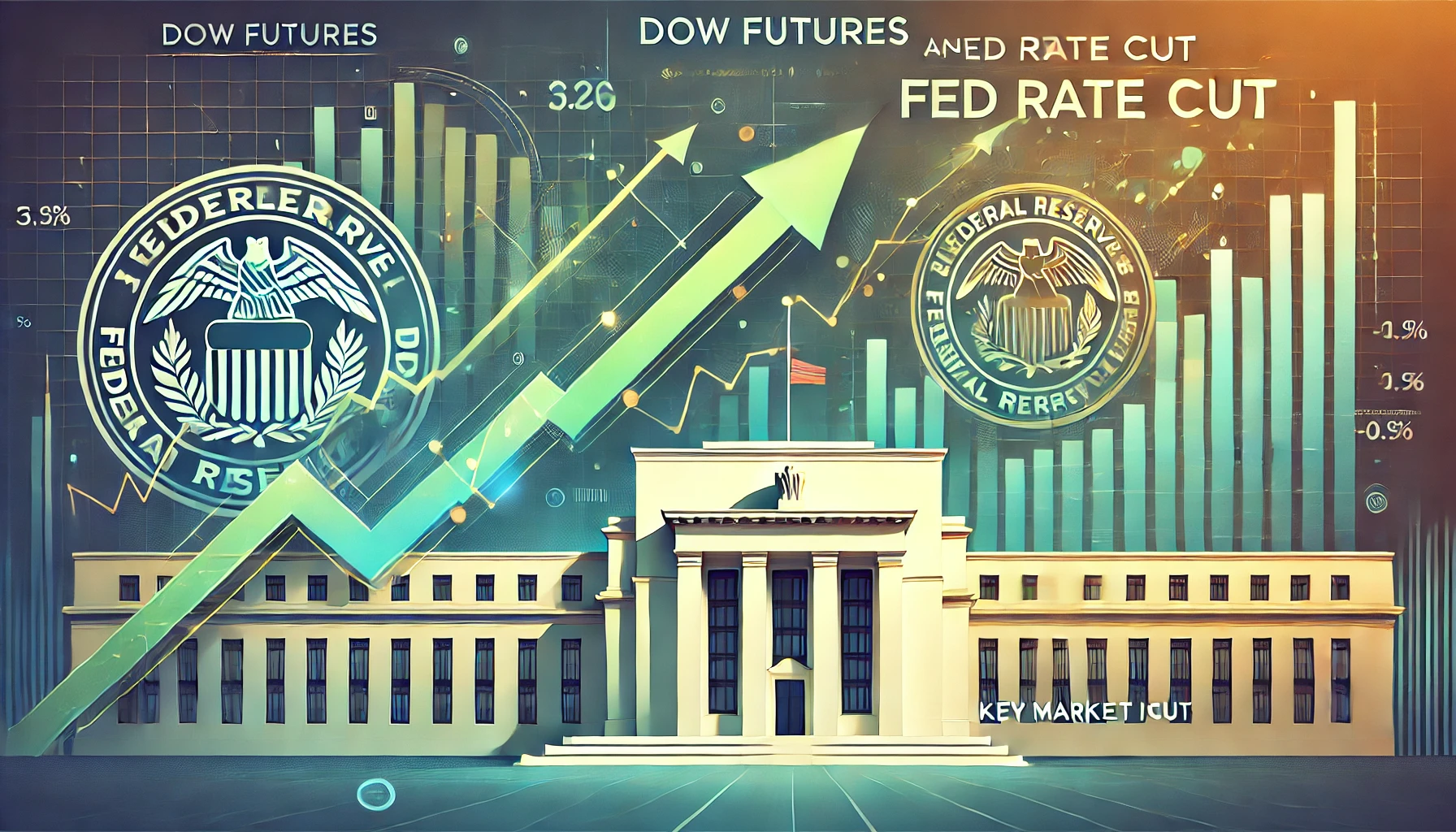Dow Futures Are Little Changed After Clinching Record High Following Fed Rate Cut: What It Means for Investors
Following a recent Federal Reserve rate cut, Dow futures have seen minimal fluctuations, even after clinching a record high. This shift in the financial landscape has left many investors wondering how these developments might affect the broader stock market. In this blog, we will explore the relationship between Dow futures, the Federal Reserve rate decision, and how the stock market responds to such shifts. We’ll also dive into live updates on Dow Jones futures, how the Fed rate cut is influencing market behavior, and what this means for the overall investment outlook.
Dow Futures: Little Changed After Record High
The Dow futures market has been in focus since the Federal Reserve’s recent interest rate cut. Dow Jones futures typically represent the future price movement of the Dow Jones Industrial Average (DJIA) and serve as a leading indicator of how the stock market might perform. On the heels of this rate cut, Dow futures today are holding steady, with little movement despite having reached a record high earlier.
What Are Dow Futures?
Dow futures allow investors to speculate on the future direction of the DJIA. These contracts enable traders to lock in a future price, hedging against volatility in the stock market. When futures are up, they signal positive sentiment; when they’re down, the market is expected to decline.
- Dow futures live updates provide real-time information on futures contracts.
- Stock market futures, including the Dow, S&P 500, and Nasdaq futures, help traders gauge market expectations.
For investors, staying updated on Dow futures live updates can be crucial for planning trades and making informed decisions.
Federal Reserve Rate Cut: What Does It Mean for Dow Futures?
The Federal Reserve rate cut has a direct impact on the stock market, including Dow futures. When the Fed lowers interest rates, borrowing becomes cheaper, encouraging investment in both equities and businesses. As a result, the market often reacts positively to rate cuts, with Dow futures and other indices showing upward trends.
How the Market Reacts to Fed Rate Cuts
Historically, market reaction to Fed rate cuts has been optimistic. A lower interest rate environment typically stimulates economic activity by reducing the cost of borrowing. For companies, lower rates translate into cheaper loans and more capital to invest in expansion, which in turn boosts stock prices.
The most recent Fed rate cut has been no exception. While Dow futures have been relatively stable, they have benefited from the overall upward momentum that followed the rate cut. This is why many investors closely monitor the Federal Reserve rate decision to gauge how the market might move(Global Training Center).
S&P Futures and Stock Market Updates: Following Broader Trends
While Dow futures often grab headlines, S&P futures are another critical indicator that investors use to gauge the market’s performance. The S&P 500 represents a broader index of the largest 500 companies in the U.S., making its futures a valuable tool for assessing overall market health.
Why S&P Futures Matter
- S&P futures track the expected future value of the S&P 500, giving investors a sense of market sentiment.
- Just like Dow futures, S&P futures provide insight into how the broader market might perform in the short term.
Investors who follow stock market live updates often use these two futures markets together to get a fuller picture of market trends. By keeping track of both Dow Jones futures and S&P futures, investors can develop a more informed strategy.
Market Reaction to Fed Rate Cut: Key Insights
As with most Federal Reserve rate decisions, the recent rate cut has spurred various market reactions. Investors usually anticipate how rate cuts will affect corporate earnings and broader economic growth, adjusting their positions accordingly.
Key Effects of the Fed Rate Cut on the Market
- Boost in Equities: Rate cuts tend to raise the appeal of stocks since lower yields in the bond market push investors toward equities.
- Sectoral Impact: Certain sectors, like technology and consumer goods, may benefit more from lower rates due to their growth potential in a cheaper borrowing environment.
- Increased Volatility: While rate cuts can lead to market gains, they can also introduce volatility, especially as investors digest the long-term impact of such policy decisions(Supply Chain World magazine).
The market reaction to the Fed rate cut in this case has been generally positive, with Dow futures and other indices showing resilience. However, some sectors are more sensitive to interest rate changes, making it essential for investors to remain vigilant.
How to Navigate the Stock Market with Dow Futures and Rate Decisions
For active traders and long-term investors alike, understanding the implications of Fed rate cuts on Dow futures and the stock market is essential. By following Dow futures live updates and tracking movements in stock market futures, investors can anticipate how broader economic policy decisions may influence their portfolios.
Key Tips for Investors:
- Stay Updated: Follow stock market live updates to stay informed about shifts in Dow futures and the broader market.
- Monitor Federal Reserve Decisions: Keep an eye on Federal Reserve rate decisions and anticipate how they may affect stock market futures.
- Diversify Your Portfolio: While Dow futures provide insight into market trends, it’s important to diversify across different asset classes to mitigate risks.
Investors should also consider the broader economic context, including inflation rates, global supply chain issues, and corporate earnings reports when making decisions.
Dow Futures Outlook: What to Expect in the Coming Weeks
With Dow futures remaining stable following the Fed rate cut, many analysts expect the market to continue trending upward in the short term. The Federal Reserve’s policy changes, combined with ongoing economic recovery efforts, have created an environment where the stock market is likely to see incremental gains.
However, potential risks, including inflation and supply chain disruptions, could still impact the performance of Dow futures and other indices. As such, investors should remain cautious and keep a close watch on Dow futures live updates and broader stock market futures.
The Long-Term Impact of Federal Reserve Policies
Looking ahead, the long-term effect of Federal Reserve policies will play a crucial role in determining market direction. If the Fed signals additional rate cuts or changes its stance on inflation, we could see significant shifts in Dow futures and overall market sentiment(Supply Chain World magazine).
Fed Rate Cuts, Dow Futures, and the Stock Market’s Path Forward
The relationship between Dow futures, Federal Reserve rate decisions, and broader stock market futures is complex yet integral to understanding market movements. With Dow futures today remaining stable after the record highs achieved following the Fed’s rate cut, investors are paying close attention to how the market evolves. By following live updates on Dow Jones futures and S&P futures, traders can stay ahead of market trends and adjust their strategies accordingly.
For investors, staying informed about Fed rate cuts, Dow futures, and stock market live updates is critical. These elements can significantly influence trading decisions and portfolio performance. For further insights into market trends and investment strategies, visit Regent Studies for expert analysis and resources.
For real-time updates on the Dow futures and stock market performance, check out this market analysis from Bloomberg.



